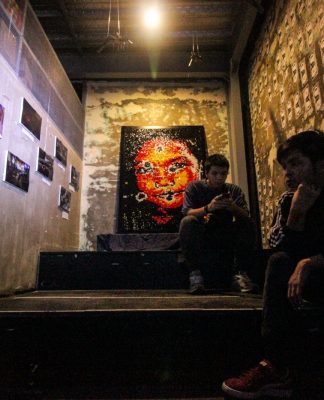THE MERE MENTION of the month of May makes people think of the grandiose festival called Santacruzan. But despite this tradition’s primary aim to recount Queen Helena’s historic quest for Jesus’ cross, it seems that its local adaptation has been reduced to nothing but show and pageantry, full of tinsel and glitter but devoid of spiritual meaning and content.
Last May 6, models wearing gowns designed by more than 30 members of Fashion Designers Association of the Philippines took part in a Santacruzan at the Rajah Soliman Park in Malate. The gowns highlighted the flowers of the Philippines, thus the theme, “Traje Flora Filipina.”
But this was not the case when the Franciscans from Spain and Mexico introduced Santacruzan to the Philippines in 1577, according to the Dominican biblical scholar Fr. Efren Rivera, O.P.
“The Santacruzan was originally done to teach new Christians to venerate the cross of Christ,” Rivera, who trained at the École Biblique et Archéologique Française in Jerusalem, told the Varsitarian. “The Franciscans used drama as a tool for preaching.”
With the observation of the annual Santacruzan, religious tradition came to mix myth and history to tell the historic search for Christ’s cross.
The first Santacruzan
In 326 A.D., Queen Helena went to Jerusalem in search of Christ’s cross after her son, Emperor Constantine, converted the Roman Empire to Christianity. As Jewish custom states that all objects used to execute a criminal should be buried in a hole near the burial site, the queen initially looked for the Holy Sepulcher to find the instruments used against Jesus. The queen ordered her servants to dig near the place where Christ was buried. Three wooden crosses were discovered apparently belonging to Jesus and the two criminals crucified with him. Since the crosses were not identified and the headboard in Christ’s cross was nowhere, it was difficult to determine which of the three belonged to Christ.
Believing that the true Cross could heal the sick, Queen Helena called an ill woman to touch the three crosses. Upon touching the third cross, the woman was cured and Jesus’ cross was identified.
This trek of Queen Helena was the highlight of the Santacruzan, which supposedly starts with a nine-day novena. The most beautiful girl in town is asked to portray the queen to give her distinction, as other female characters were also portrayed in the parade. These included Reina Sheba, carrying a jewelry box, who tested King Solomon’s wisdom; Reina Esther holding a scepter, who became the instrument of God to avert the destruction of the Jews; the Samaritana carrying a jug, who spoke with Christ in the well; Veronica holding a handkerchief, who wiped the face of Jesus; and the Tres Marias, namely Mary of Magdala, Mary the Mother of Christ, and Mary the mother of James.
The parade was also studded with symbolic characters. The queens who symbolized the theological virtues were Reina Fe, carrying a cross for faith; Reina Esperanza, holding an anchor for hope; and Reina Caridad, holding a red heart for charity. With them were Reina Sentenciada, bounded by ropes, who symbolized the convicted innocents; Reina Justicia, carrying a weighing scale and a sword, who personified the mirror of justice, Reina Banderada, a young lady wearing a red gown, who stood for the coming of Christianity in the Philippines; Reina Mora who signified Islam, the dominant religion before Christianity; and Methuselah, the oldest man in the Bible, who reminded people that all that glitters will end up in dust.
Completing the parade were the historically based characters. The Aetas represented the state of the country before the coming of Christianity. Reina Judith of Pethulia, known for saving her city from the Assyrians, was depicted by a woman holding a beheaded man. Finally, Reina Elena was last in line escorted by her son, Constantine.
The procession was commonly accompanied by the playing of the rondalla and the singing of Dios Te Salve. The devotees walked with the procession holding lighted candles in their hands.
Cathechetical tool
The Santacruzan, often confused as a part of the liturgy, was actually a catechetical celebration.
According to Fr. Rivera, the Philippine church has not directly took charge of the celebration since the withdrawal of the Spanish rule in the country. Since then, the lay people have been organizing the annual Santacruzan. But the religious aspects of the celebration has been sidelined so it has turned these it into a mere beauty pageant.
“It’s a pity that the Santacruzan has lost its original catechetical essence,” Rivera said, referring to the people’s emphasis on the pageantry of the event rather than on the symbolisms of the characters. “This tradition is actually observed to portray St. Helena’s finding of the Holy Cross and to catechize the people of the Christian virtues as symbolized by the different characters, not for any other purpose.”
Rivera likewise said that in order to bring back the essence of the Santacruzan, it is important to bring back the characters portrayed in the parade.
“There should be someone who explains the relevance of each character in the parade and who tells the story of St. Helena’s quest for the true Cross so that the audience would not consider it a mere parade of beauty,” he said. Yve Camae V. Espeña
















